The PAMS Healthcare Hub Newman is the first primary healthcare facility of any type to be constructed in Newman, approx. 1200km north of Perth (pop 10,000).
With a majority Aboriginal population, Newman is the main town in the Shire of East Pilbara, a remote regions approximately the size of Japan.
The new Healthcare Hub incorporates the client Puntukurnu Aboriginal Medical Service (PAMS) head office and will service the entire Shire with a focus on the local Niabali and Martu people as well as those in the four communities of Jigalong, Parnngurr, Punmu and Kunawarritji.
Kaunitz Yeung Architecture undertook an extensive co-design process with the community and specific user groups. Importantly it enabled impromptu yarning, under a tree, at the petrol pump or on the way to the shop, enabling all voices to be heard from a nomadic culture not always comfortable speaking within the mob.
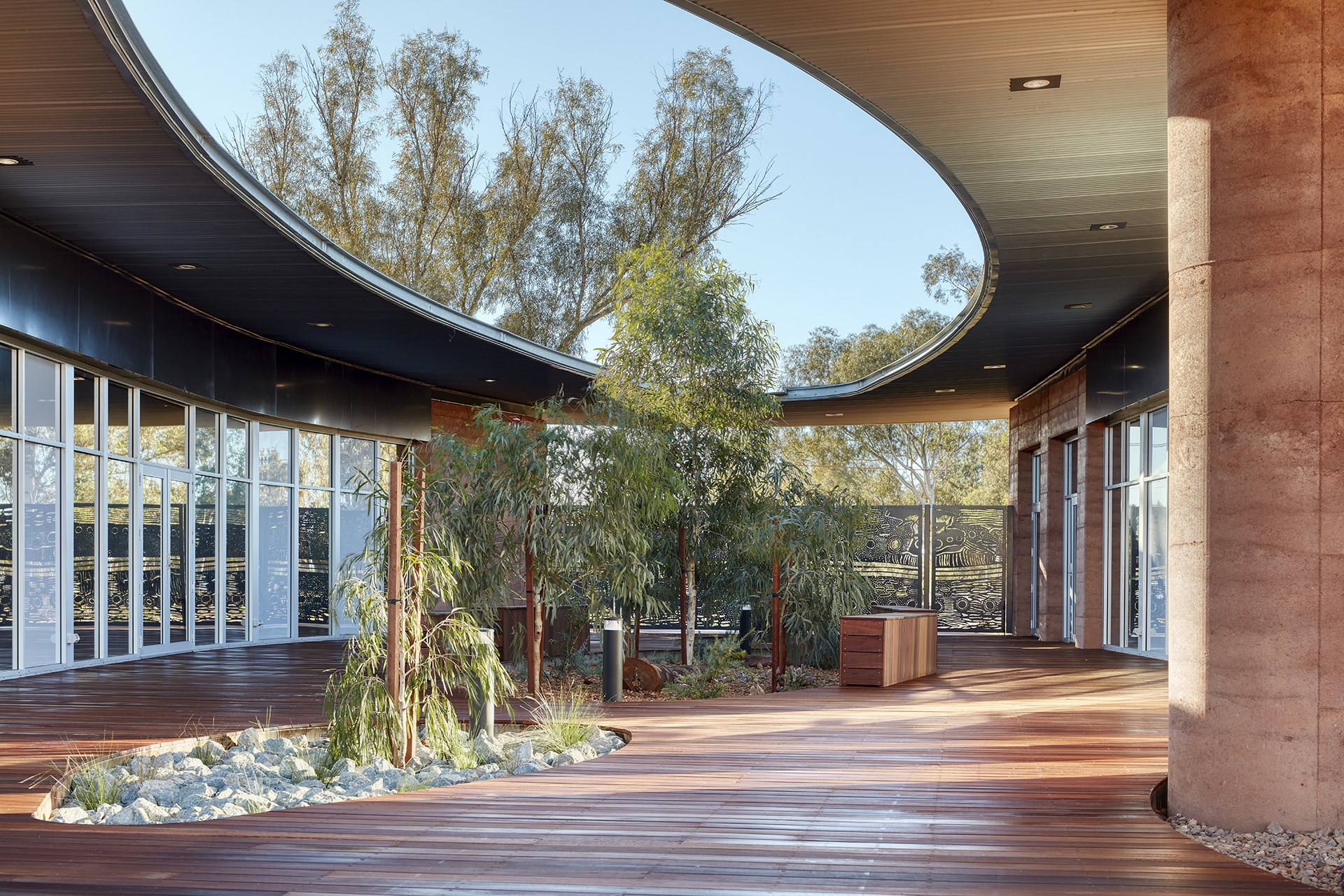
The result was a rammed earth design, built around a central courtyard. Courtyard buildings are a logical and well used architype for desert climates providing a delicate, habitable heart to buildings within the harshest of environments.
The courtyard divides the building between the health clinic and the administration whilst enabling a visual connection and the opportunity for interaction between management and the community.
The roof from both wings fall towards the courtyard which is timber decked in Australian hardwoods to minimise any heat sink effect and be comfortable even under bare feet. Downpipes are replaced with spouts that guide the water into the central swale planted with mature Eucalyptus Vitrix trees mimicking the dry riverbeds so characteristic of Martu and Niaboli country. In the rare rain events of the year the courtyard is briefly transformed just as the surrounding country is.
Rammed earth for the project came completely from the site, reducing the embodied energy of the building which would have otherwise been clad in manufactured materials transported from Perth 1400km away or concrete.
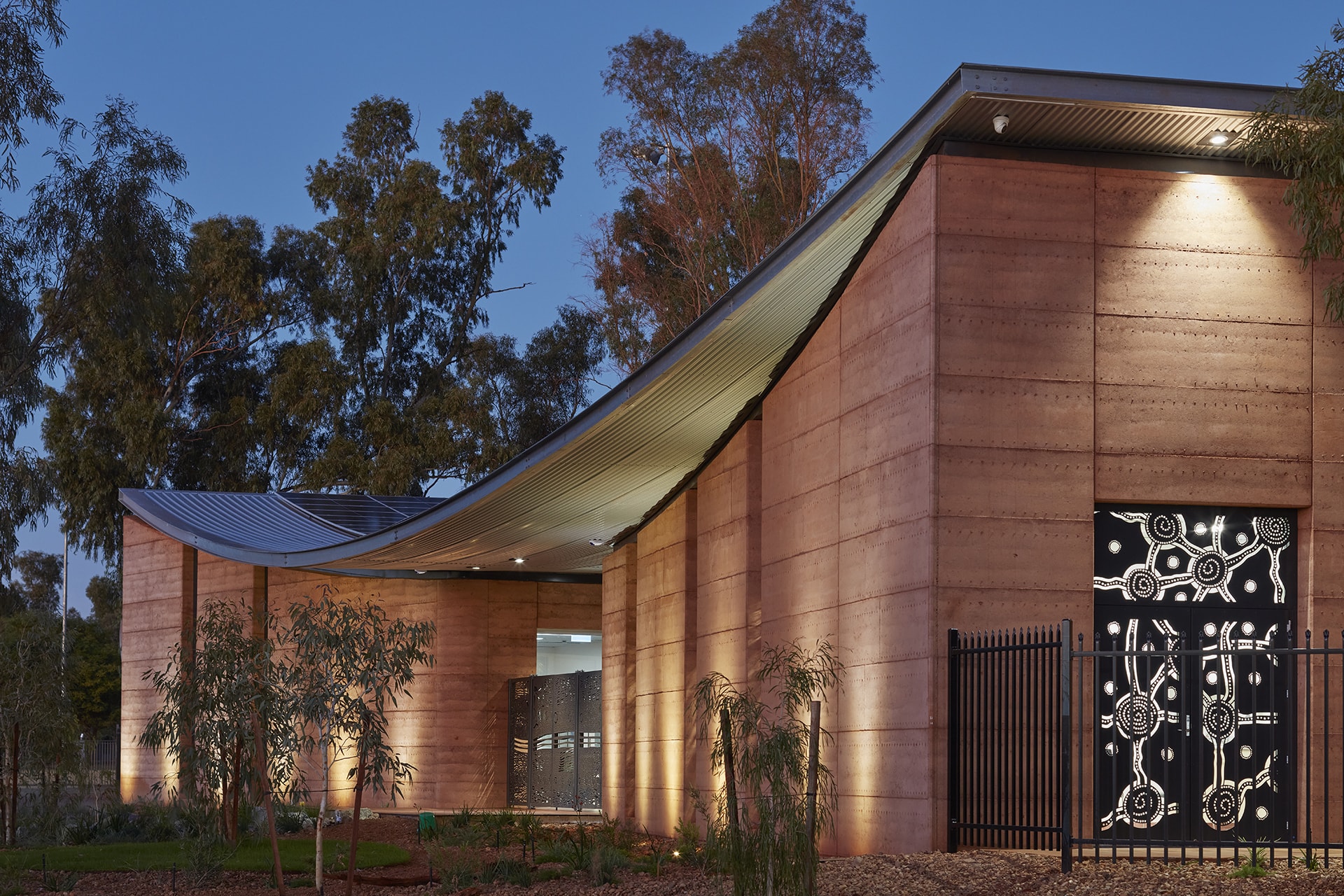
However, its value to the project is much more profound than this. Rammed earth creates a human and intuitive connection to its place. It reflects the different light and absorbs the rain just like the surrounding country. This is obvious and immediate to everyone but especially important for Aboriginal people.
The value of integrating art and therefore culture into the project comes as much from the process as it does the outcome. The incorporated artwork is from 19 artists representing the 5 communities of Kunawarritji, Punmu, Parnngurr, Jigalong and Newman the building services. It includes Martu and Niabali artists selected by the community.
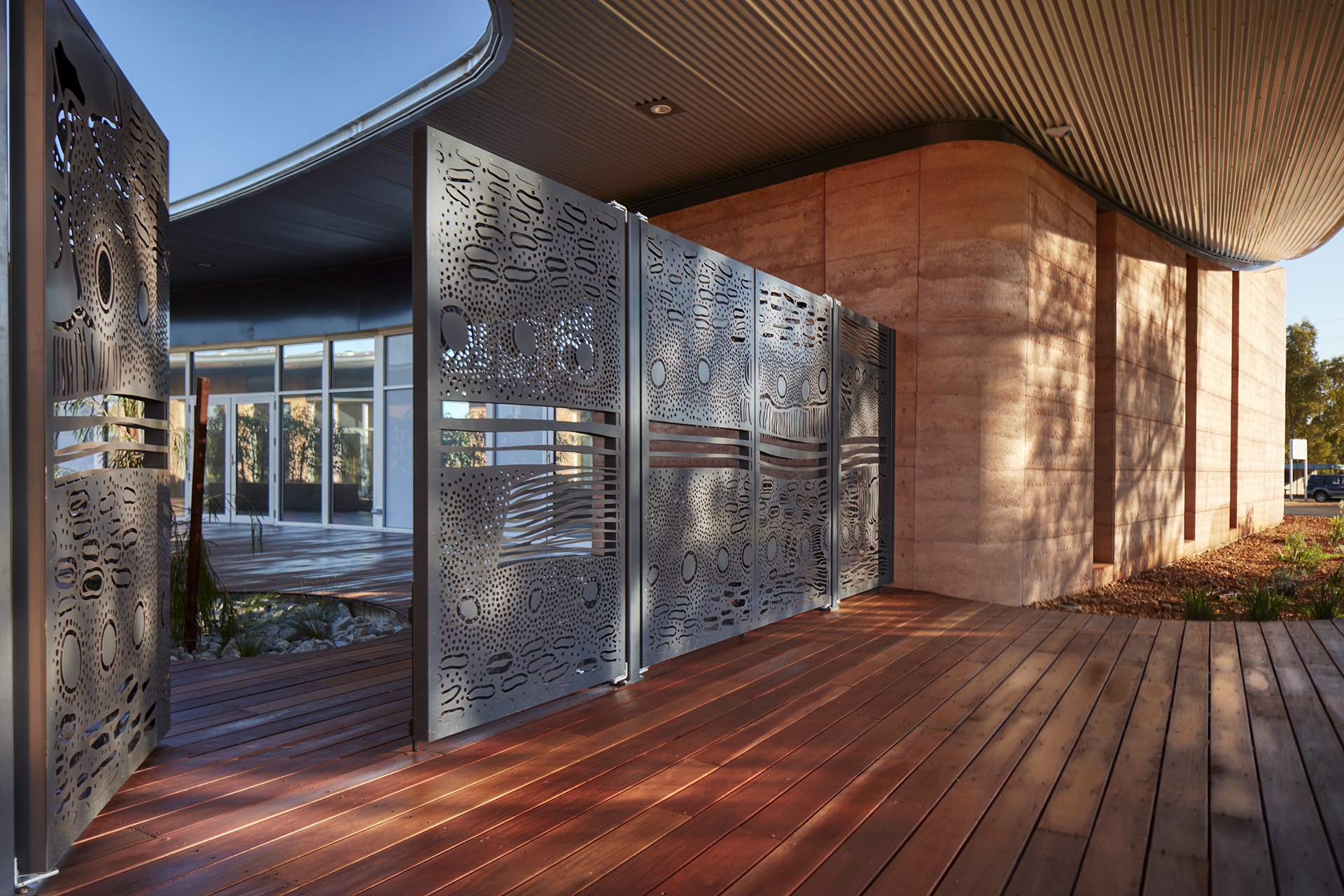
The resultant art screens form window protection on most windows and the entry gates. The window screens filter light into the rooms causing changing projections into the room. This adds to their value in humanizing the building and its spaces within. At night, the screens lit from within become a beacon of culture into the community.
Landscaping is integral to connecting the building the country. Over 2000 local endemic plants were used to create low maintenance, robust and relevant landscaping. Eucalyptus Vitrix were already thriving on and around the site without any care and constitute the trees species used for the 30 mature trees planted. This more than offset the 2 trees removed for construction.
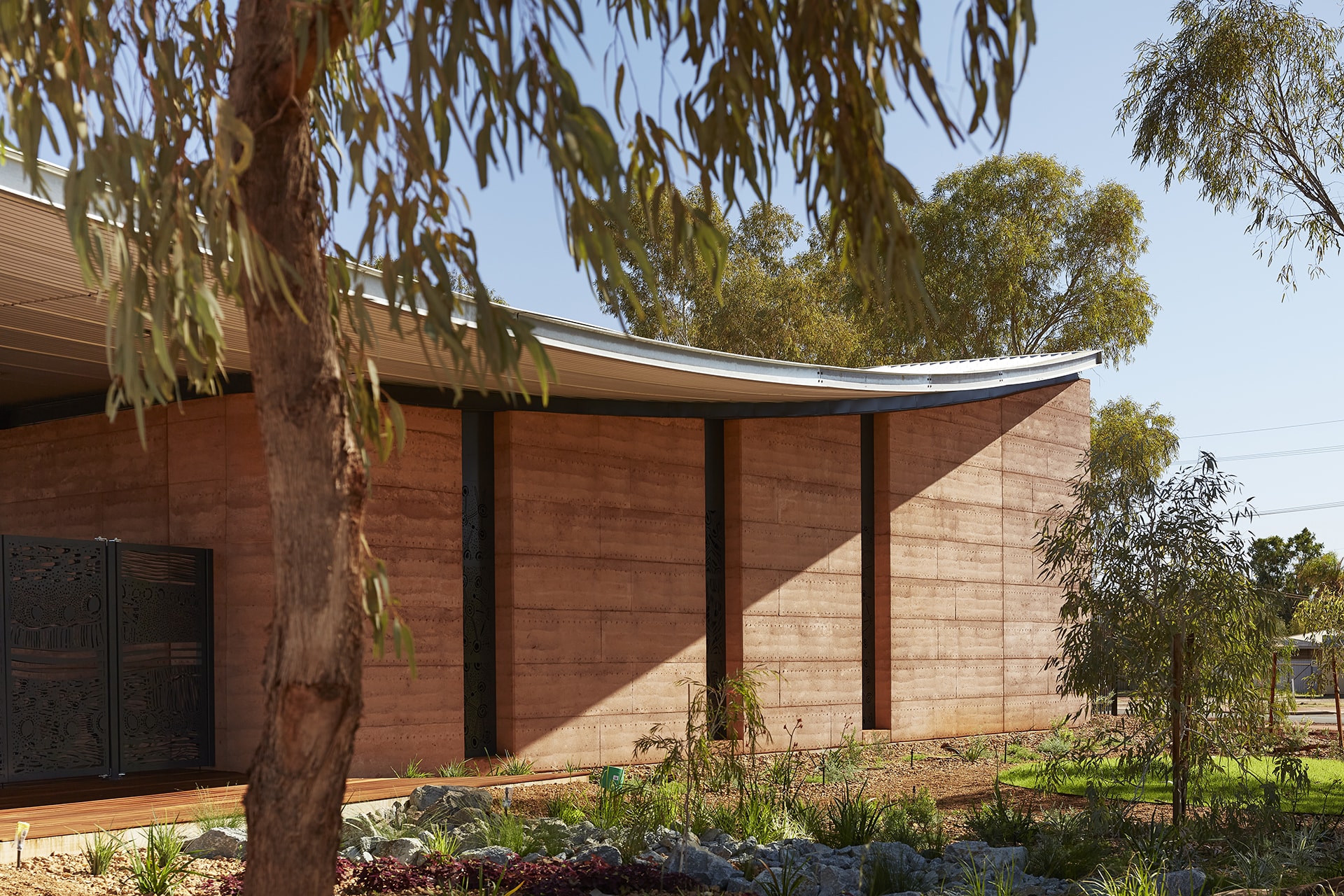
The landscaping in the courtyard is integral to the experience of the building. The roof is left open and mature trees will increasingly shade the space and form a park inside the building. This is the sort of restrain and harnessing of nature which is inherent in Indigenous culture.
The rammed earth and landscaping, including mature trees are key elements of the sustainable approach to the project. The rammed earth significantly reduces embodied energy and improves building performance.
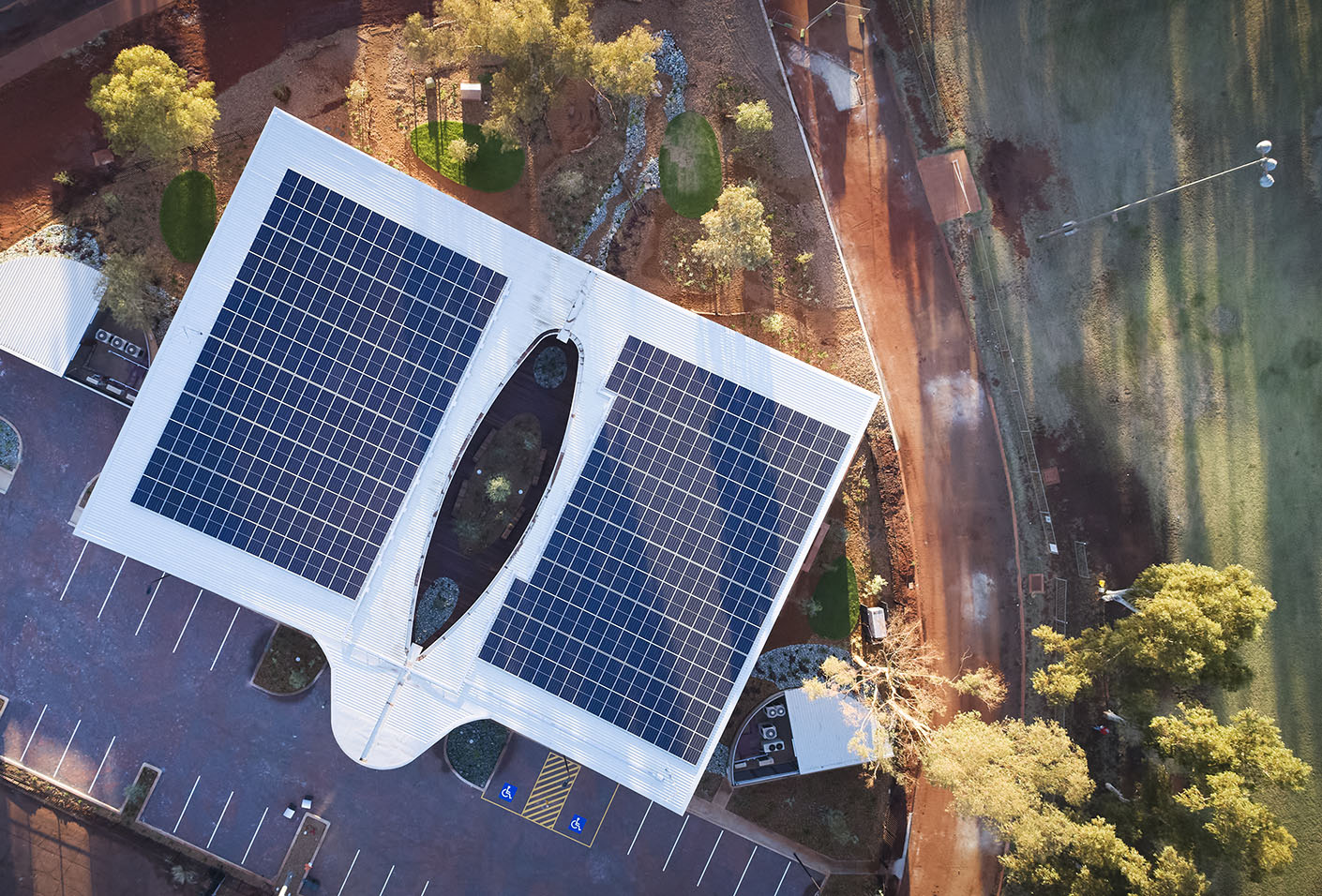
The other key sustainability feature is the 150kW rooftop photovoltaic array that will provide more than 85% of the buildings electricity. Newman is one of the driest places in Australia with only 30 days of precipitation a year and almost all its rainfall occurring in two events a year. It is essentially sunny more than 330 days a year. The solar is anticipated to provide 100% of the buildings electricity when the sun is shining.

